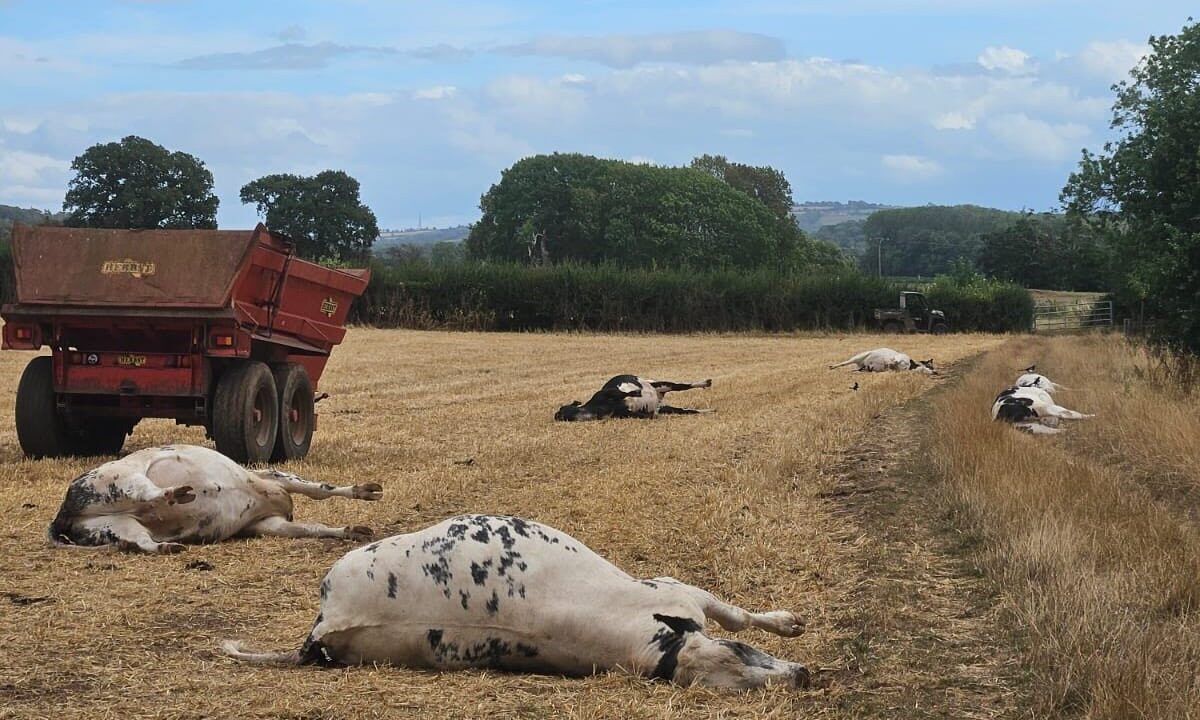A veterinary practice based in south west England has sounded a warning to farmers on the possibility of livestock poisoning from hemlock water dropwort.
Tyndale Vets, based near the southern part of the border between England and Wales, took to social media to warn farmers about the threat from the plant species.
The vet practice – which works with farmers in south west England and south Wales – also posted images detailing the potential impact, with photos showing cattle lying dead in a field.
All parts of hemlock water dropwort are highly toxic, and can kill animals within a very short time frame after ingestion.
Tyndale Vets said it has had several cases of hemlock poisoning recently.
The practice said that incidents have become more frequent due to drought conditions.
This has resulted in lower water levels in field-side ditches, with cattle therefore going deeper into ditches or digging for water.
It can also occur after ditch dredging and removal of plants that livestock can consume, Tyndale Vets said.
The social media post noted that animals depicted in the images had access to fresh water nearby, as well as supplemented forage.
The vet practice pointed out that early clinical signs of hemlock poisoning can include rapid breathing, teeth grinding and muscle weakness, before progressing to seizures and paralysis.
Death follows shortly after, and there is no treatment. Both cattle and sheep can be affected. The plant is still toxic if bailed into hay.
The plant has characteristics tuber roots, and the flower can have a similar appearance to cow parsley, though the stem is firmer.
Tyndale Vets urged farmers to be vigilant and check any ditches for hemlock prior to putting livestock in a field.
Gloves should be worn when removing hemlock.
Animal health
In other animal health-related news, the US Department of Agriculture (USDA) has said that there has been no detections of new world screwworm (NWS) in livestock in the country.
The USDA’s statement comes after health authorities confirmed a case in a human who is understood to have travelled to Central America.
New world screwworm is a species of parasitic fly, the larvae (maggots) of which eat the living tissue of certain animals.
When the fly larvae burrow into the flesh of a living animal, they cause serious, often deadly damage to the animal. Screwworm can infest livestock, pets, wildlife, occasionally birds, and, in rare cases, humans.
Over the last two years, NWS has spread north through Panama, Costa Rica, Nicaragua, Honduras, Guatemala, El Salvador, Belize, and most recently Mexico.

